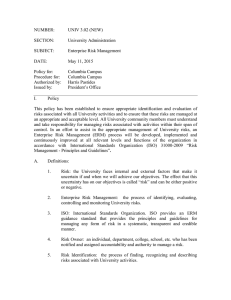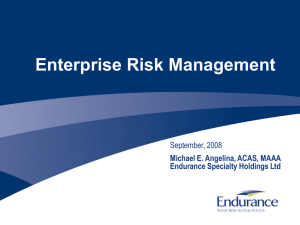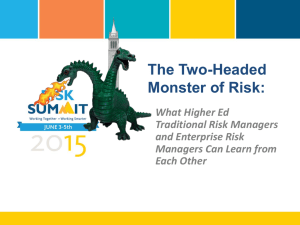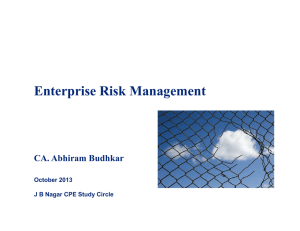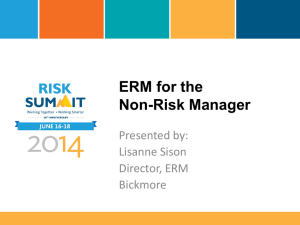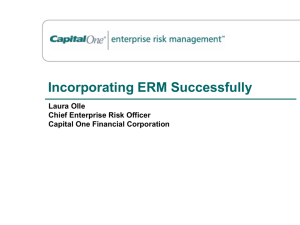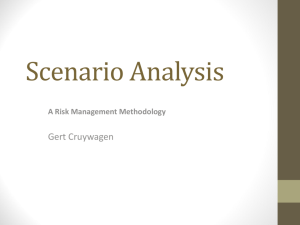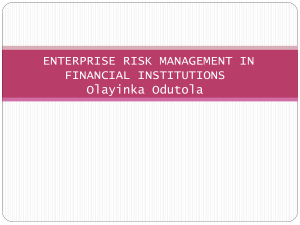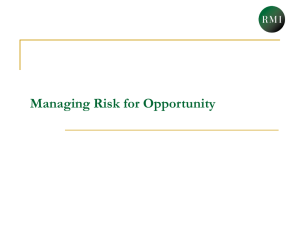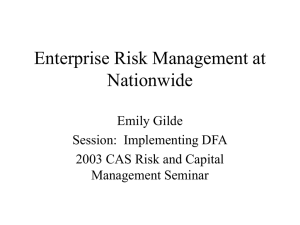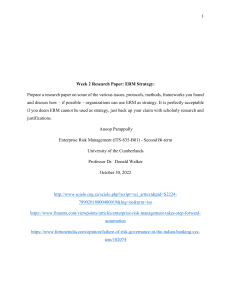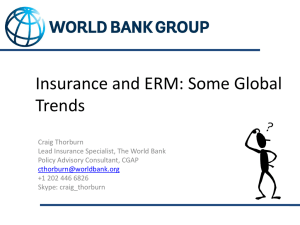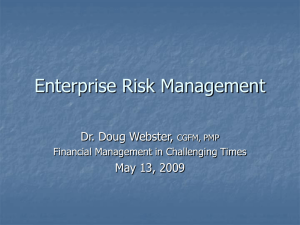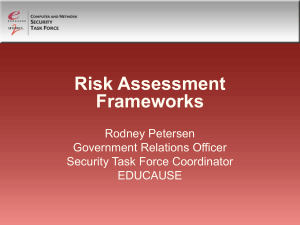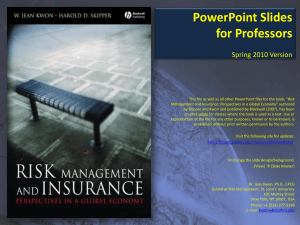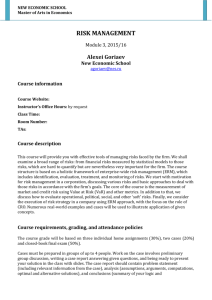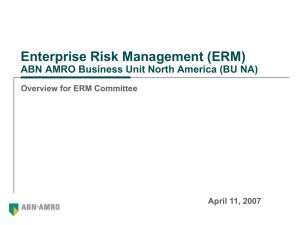Presentation Title
advertisement
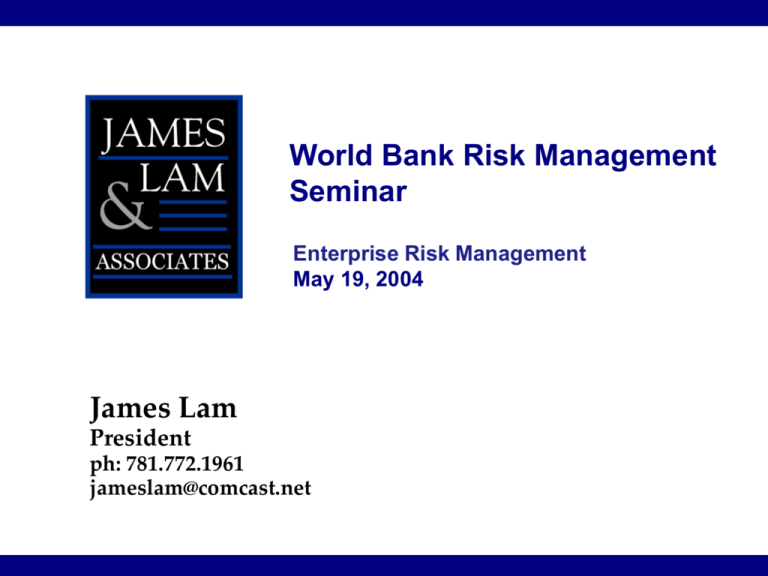
World Bank Risk Management Seminar Enterprise Risk Management May 19, 2004 James Lam President ph: 781.772.1961 jameslam@comcast.net Enterprise risk management should be defined as a value added function Definition of ERM: “An integrated framework for managing credit risk, market risk, operational risk, economic capital, and risk transfer in order to maximize firm value.” 1 ERM is useful because the risks faced by companies are highly interdependent Enterprise-Wide Risks Financial Risks FX risk in a new foreign market Financial Risk Business Risk Technology and operations outsourcing Operational Risk Derivatives documentation and counterparty risk Credit Risk Associated with Investments Market Risk Liquidity Risk Funding Liquidity Asset Liquidity Credit Risk Credit Risk Associated with Borrowers and Counterparties 2 The growing acceptance of ERM is driven by four key forces • Banks • Asset Managers • Energy Firms • Corporations Best Practices Corporate Disasters • Enron • WorldCom • Adelphia • Mutual Funds Enterprise Risk Management Regulatory Actions • S.E.C. • Sarbanes-Oxley • Basel II • Treadway Report, US • Turnbull Report, UK • Dey Report, Canada Industry Initiatives 3 While regulatory mandates are useful, don’t let the tail wag the dog Proactive Approach Reactive Approach Current state CEO ? ? ? SarbanesOxley ? ? • Benchmarking • Gap analysis • Recommendations Basel II Desired state (best practices or best-in-class practices) • Common themes • Unique standards Governance Requirements New industry standards SarbanesOxley Basel II Governance Requirements New industry standards 4 Over the past decade, CROs have gained acceptance and prominence 5/00 “This decade's hot executive is shaping up to be the CRO.” 5/00 “As interest in enterprise risk management grows, so does the acceptance of the role of chief risk officers to manage such programs.” 5 An ERM framework should encompass seven key building blocks 1. Corporate Governance Establish top-down risk management 2. Line Management Business strategy alignment 3. Portfolio Management Think and act like a “fund manager” 5. Risk Analytics Develop advanced analytical tools 4. Risk Transfer Transfer out concentrated or inefficient risks 6. Data and Technology Resources Integrate data and system capabilities 7. Stakeholders Management Improve risk transparency for key stakeholders 6 CROs must overcome significant barriers to success Inertia – absence of crisis; general resistance to change Lack of management sponsorship or line support Episodic initiatives with no long-term vision Ineffective and inconsistent risk metrics and reporting Insufficient human, systems, and data resources Failure to clearly demonstrate “early wins” and sustainable benefits Move too fast or too slow, without addressing change management issues 7 Case study: Background • $1 trillion of assets under management 3-Year ERM Program • Organized Global Risk Forum • Implemented annual Global Risk Review • Automated loss accounting • Private company • Decentralized business culture • Developed ERM framework • Implemented intranet-based Global Risk MIS • Experienced significant reduction in loss ratio 8 Early adopters of ERM have reported significant and tangible benefits Benefit Company Actual Results Market value improvement Top money center bank Outperformed S&P 500 banks by 58% Early warning of risks Large investment bank Global risk limits cut by 1/3 prior to Russian crisis Loss reduction Top asset management company Loss-to-revenue ratio declined by 30% Regulatory capital relief Large commercial bank $1 billion regulatory capital relief Insurance cost reduction Large manufacturing company 20-25% reduction in insurance premium 9 Ten predictions on the future of enterprise risk management 1. ERM will become the industry standard 2. CROs prevalent in risk-intensive companies 3. Audit committees will evolve into risk committees 4. Economic capital in; VaR out 5. Risk transfer executed at enterprise level 6. Advanced technologies key to advancement 7. A measurement standard will emerge for operational risk 8. Risk-based or economic reporting becomes standard 9. Risk becomes part of corporate and college programs 10. Salary gap among risk professionals continues to widen 10
